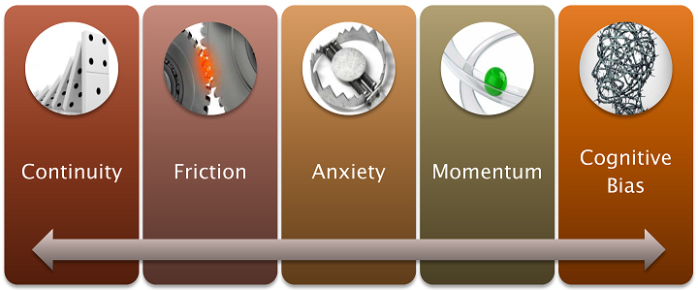According to multiple studies, 50 – 70 percent of online donation attempts end before completion.
In other words, thousands of people click the “Donate” button—saying “yes” to our value propositions, agreeing to support the people we serve—only to quit before completing the transaction.
At the risk of belaboring the point, let’s put “donation abandonment” into real-world context. We have poured precious resources—money, time, and creativity—into finding likeminded donors and volunteers, convincing them to view our Web site, and inspiring them to help the people we serve.
Potential donors then click the “Donate” button, saying in effect, “Yes! I want to share a portion of my wealth to help others through your organization. I believe in what you’re doing!” Then, at some point during the donation process, more than half of them change their minds, close the page, and do something else.
Donors have agreed to help others through our organization, but our donation process convinced half of them to do otherwise.
This brings us to our third principle of donor and volunteer satisfaction. It is perhaps, the most overlooked, yet the most critical to our bottom line.
Principle 3: A clumsy donation or volunteer process turns potential advocates into quitters.
Non-profit marketing and communications begins with good messaging, on which the first two principles focused.
Principle 1: Donors and volunteers give to people, not to causes or organizations.
Principle 2: Problems urge donations; results inspire activists.
Non-profit marketing begins with a captivating appeal (based on a compelling value proposition) and leads to a clear call to action. But it must not end there. We promise the donor will experience satisfaction in his or her decision to help others; the success of our cause then demands that the donation or volunteer process reinforce their initial decision.
If our donation process erases this initial excitement before the end of the first attempt to help, how can we reasonably expect our organizations to grow?
Think about the economic impact of this. If we simply avoid disappointing donors with our clumsy online donation process, we could double our online revenue and help twice as many people!
Okay. ‘Nough said about the problem.
As I studied the issue of online donation abandonment in depth, I identified five factors of donor psychology that, when addressed with specific remedies, virtually eliminated the problem.
Here are the five principles listed and summarized. We will examine each in detail in coming articles.
The perception that the donation process flows naturally from the value proposition and call to action.
Factor 2: Friction
Cognitive resistance to any element of the online transaction process, usually presenting as confusion.
Factor 3: Anxiety
Emotional resistance to any element of the online transaction process, usually presenting as concern.
Factor 4: Momentum
The feeling of ease or effortlessness that continues throughout the online donation process.
Factor 5: Cognitive Bias
Unconscious influences that systematically affect decision-making.

This article focuses on donor behavior because we have tons of data to study. Completing an online donation transaction is relatively simple compared to the intricate process of volunteering, which is fraught with opportunities to disappoint. So, it’s no great stretch to suggest that volunteer abandonment is equally high, if not higher.
Fortunately, these five factors of donor psychology apply equally to volunteers. As we examine each factor in detail, we can evaluate our volunteer processes to maximize participation.
In preparation for the coming articles, talk to your Web development team and have them begin measuring donor abandonment. This is a relatively simple thing to do, even for novice developers. Google Analytics is a free service and it’s easy to configure.
Simply have Google Analytics count the number of times users click any of your “Donate” buttons, then compare that number to the number of online donations received.
Begin tracking these two numbers on a weekly basis, and consider making donor abandonment a key metric in measuring the effectiveness of your marketing, communications, and Web development teams.